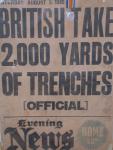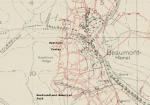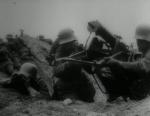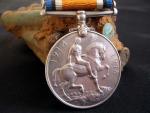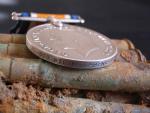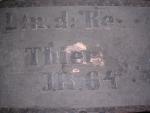-
Posts
3,687 -
Joined
-
Last visited
-
Days Won
2
Content Type
Profiles
Forums
Blogs
Gallery
Events
Store
Everything posted by Tony
-
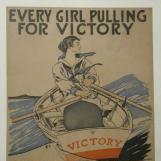
19th century sleeve insignia 'S'
Tony replied to Tony's topic in Great Britain: Militaria: Badges, Uniforms & Equipment
Spot on Leigh, see Graham's post No. 3. Cheers Tony -
Any assay marks Peter? Tony
-

1907 Bayonet unit markings?
Tony replied to JensF.'s topic in Great Britain: Militaria: Badges, Uniforms & Equipment
Jens, I have a copy of H Williiamson's book (vol II) which has a very long list of unit bayonet markings. Under MM is Monmouthshire Regt. so I'd guess at 3rd Batt. Monmouthshire Regt. Territorials. http://www.rrw.org.uk/museums/brecon/fact_sheets/19.htm The book doesn't mention the disbandment but the above link says they disbanded in late 1916 so as Michael says, the date could be a bit of a worry. By the way, a copy of vol II is on ebay.uk at the moment, it's great book with much information on ammo, equipment etc. of many WWI armies and is very much underrated im my opinion. Tony P.S.: also from the link, disbanded Aug. 17 A second line battalion of the 3rd Monmouths was formed at Abergavenny in September 1914. February 1915: Moved to Cambridge as part of Welsh Border Brigade, Welsh Division. 19th April 1915: Moved to Northampton as part of 205th Brigade, 68th Division. July 1915: Moved to Bedford. November 1916: Moved to Lowestoft, Suffolk. April 1917: Moved to Herringfleet, Suffolk. August 1917: Battalion disbanded, personnel absorbed in 2/1st and 2/2nd Battalions. -

The War of 1812
Tony replied to Michael Johnson's topic in Great Britain: Research, Documentation & History
Michael, Does much from that period turn up? It's nice to have a piece of history that was actually there. Tony -

A medal to a Londoner with no known grave
Tony replied to Tony's topic in Great Britain: Orders, Gallantry, Campaign Medals
Thanks everyone. Gilbert, I only know that 92 - 108 Dennets Rd. are missing (a block of flats stands in their place), probably through bomb damage as the rest of the street is still there. I don't know about his girlfriend's place though and wonder how long she kept his medals and plaque, wished I had the whole group and a photo of him. Tony -

A medal to a Londoner with no known grave
Tony replied to Tony's topic in Great Britain: Orders, Gallantry, Campaign Medals
Feel free Chris. I'm going to walk the few hundreds yards Fred walked and take some pics too. I also have photo copy of the diary for June and July. Tony -
Brian, there are probably hundreds of medal prefix letters and numbers which usually denote a trade, old army, new army etc. I have just started a thread on a soldier with a PS prefix meaning Public Schools battalion. I have this info in H Williamson's book: SE is section veterinary Corps L for RA is local enlistment S for the Camerons is wartime enlistment for Scottish regiments Tony
-

A medal to a Londoner with no known grave
Tony replied to Tony's topic in Great Britain: Orders, Gallantry, Campaign Medals
Sir Douglas Haig had said ?the machine gun is a much overrated weapon.? I wonder when/if he changed his mind and what brought him to that conclusion. A big thanks to Kevin who retrieved FP Spencer?s service record and battalion diary from the PRO and of course the Reichsarchiv, Somme Nord, Teil I. A book everyone should have. I think I need to take another trip to the Somme very soon. For me, the Evening News from 5.8.16 says it all about the Great Push of summer 1916. -

A medal to a Londoner with no known grave
Tony replied to Tony's topic in Great Britain: Orders, Gallantry, Campaign Medals
The British and Commonwealth casualties for 1.7.16 amounted to 57,470. 19,240 were dead or died later from their wounds. German casualties were around 10,000 to 12,000 killed and wounded, this includes the 7 day bombardment leading up to the attack. At 10.30pm the day before the attack, 22 officers and 689 ORs of the 16th arrived in Auchonvillers where they bivvied before getting ready to go over the top the next morning. On the 1st July the 16th Middlesex had over 500 casualties, 155 Men and 6 officers were killed that day, and many like Frederick were from SE London. Peckham, Battersea, Vauxhall, Walworth, Brockley, Greenwich, Charlton, Lambeth and Camberwell. Frederick Percy Spencer has no known grave and is remembered on the Thiepval memorial to the missing, his is just one of the 72,100 names. Hawthorn Redoubt wasn?t taken until November 1916. -

A medal to a Londoner with no known grave
Tony replied to Tony's topic in Great Britain: Orders, Gallantry, Campaign Medals
According to the 16th Public Schools battalion diary, the men were back in their own frontline trench by 10.30am. Casualties noted at that time were: Killed ? officers 3 / OR 19 Wounded ? officers 13 / OR 306 Missing believed killed ? officers 6 / OR 37 Missing ? officers 5 / OR 138 -

A medal to a Londoner with no known grave
Tony replied to Tony's topic in Great Britain: Orders, Gallantry, Campaign Medals
-

A medal to a Londoner with no known grave
Tony replied to Tony's topic in Great Britain: Orders, Gallantry, Campaign Medals
RIR 119 had 292 casualties, of them, 101 were dead including 8 officers. A trench map from June 1916 showing the front lines. -

A medal to a Londoner with no known grave
Tony replied to Tony's topic in Great Britain: Orders, Gallantry, Campaign Medals
Amongst the infantry of the British 29th Division waiting to attack, was Frederick Percy Spencer. They waited until 7.30 before going over the top to take what was now Hawthorn Redoubt crater from the dead and demoralised enemy. Although the crater was 50-60 metres in diameter and 15 metres deep, not all were dead and the blowing of the mine no doubt alerted the survivors to the pending attack. The few men from RIR 119 not gasping for air while trapped deep underground in their dugouts, had enough time to prepare themselves. The remnants of this W?rttemberg unit greeted the attacking infantry with racing machine gun fire, who, in full view, were now searching desperately for cover in the long grass. The firing of red flares into the air gave the signal for the German artillery to open up a curtain fire. Frederick Percy Spencer was by now well out of the support trench in front of Auchonvillers, and if not already dead in no man?s land, was still moving towards the German guns. He was never seen again. The British infantry still pressed on, those who managed to get close enough to the lip of the crater were met with grenades being thrown by what were now, very angry Germans I would think; the British attacking Hawthorn Redoubt could not overrun the stern opposition and therefore, after suffering heavy casualties retreated back to their original position. -

A medal to a Londoner with no known grave
Tony replied to Tony's topic in Great Britain: Orders, Gallantry, Campaign Medals
Unlike the previous rainy days which caused a delay in the start of the 'big push', the first day in July 1916 was sunny with an expected 22?C. A nice day for it you could say. At 7.20am a mine containing 40,000 lbs of explosive was blown under the German line at Hawthorn Redoubt (just in front of Beaumont Hamel, which by now was in ruins after a week of bombardment), the occupants were men of the 9th Coy. RIR 119 from W?rttemberg, commanded by Oberst Freiherr von Ziegesar. RIR 119 had already lost almost 100 OR and 3 officers during the 7 day preliminary bombardment. This photo shows the mine explosion which was actually filmed. -
This BWM has the name of Frederick Percy Spencer impressed to the rim. He was a bookkeeper who grew up in Dennets Rd., New Cross, in SE London and after volunteering on 11.9.14, become a member of the 16th Public Schools Battalion, Middlesex Regt. He left for France on 7th January 1916. Before going to the front, poor old Frederick had spent some time in clink. He received 42 days for going AWOL and forging a medical certificate as well as another 14 days for improper conduct on fatigue and disobeying an order. His BWM and VM were signed for by Miss Francis Letitia Hedges of 4 Overcliff Rd., Lewisham, she also received any personal belongings. His girlfriend back home?
-

EK 1914 Help with unit id on an EK2 Certificate please
Tony replied to andy's topic in Germany: All Eras: The Iron Cross
Hello Andy, It looks like Wilhelm Kr?ger of what might be called the Signals today (Fernsprecher) was awarded the iron cross on 27.1.18. I don't know anything about the divisional signal company 233 (if that's the correct translation) though. Tony -
Nice one Bob. Titel: Geschichte des Infanterie-Regiments Generalfeldmarschall Prinz Friedrich Karl von Preu?en (8. Brandenburg.) Nr 64 w?hrend d. Krieges 1914/18 / Von Feldzugsteilnehmern bearb. Verleger: Berlin : Verlag Tradition With. Kolk Erscheinungsjahr: 1929 Umfang/Format: 414 S. : Mit Kt. Textskizzen, Bildern ; gr. 8 Einband/Preis: Lw. : 15.- Now I'll have to see if the local library can get a copy. Glenn, thanks for looking. I wonder if he served somewhere safer than the front, it would be nice to find out if his Bursche lugged his trunk about in Flanders and France. Tony
-
Hello Bob, Thanks for the comments. He isn't on the Volksbund site so may have survived and the local library gave me a shocked look when I asked about official Great War history books. They did take a look in the vaults for me and came up with one whole book which was about the Prussian army in the 18th century. Tony
-

brengun backpack?
Tony replied to sgtmartty's topic in Great Britain: Militaria: Badges, Uniforms & Equipment
Ta Kev. Tony -

A simple little medal.
Tony replied to ChrisB's topic in Great Britain: Orders, Gallantry, Campaign Medals
Chris, I try to find medals to soldiers from the where I grew up (have 2 at the moment and 1 from a Somme casualty who lived just across the border but in the same borough) and after doing some research, it seems to bring them back to life. Try to research as much as you can, what Ed said Each medal, being named, is unique, quite literally. And each has the tale of an individual wrapped up in that chunk of metal and length of ribbon. And, often, this a powerful (though sometimes mundane) tale, but it can almost always be dug out by diligent research. is so true. Tony -

brengun backpack?
Tony replied to sgtmartty's topic in Great Britain: Militaria: Badges, Uniforms & Equipment
Get digging Kev and remind me of the way a large pack was fixed on 58 pat. webbing, I'm sure it wasn't as above (37 pat.?) and being RCT I hardly carried one anyway. Tony -

brengun backpack?
Tony replied to sgtmartty's topic in Great Britain: Militaria: Badges, Uniforms & Equipment
Don't German war time rucksacks have the same fittings?



